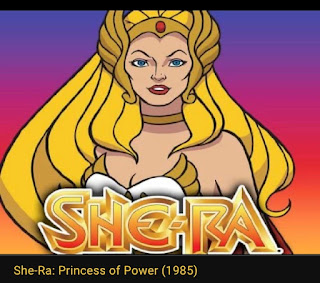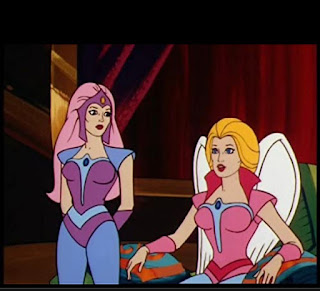As Filmation wound down its He-Man and the Masters of the Universe series, a ‘back door’ had magically opened up for the hulky hero’s long-lost twin. Now the torch could be ably carried on with She-Ra: Princess of Power and by 1985, sisters were doin’ it for themselves.
Not a completely sloppy imitation, She-Ra had a style and appeal that was all herself, rather than a Xerox copy of her famous brother wearing a pink bow. She lived in another universe on a unique planet of her own, albeit one decidedly more pink and lavender!
Created by Larry DiTillio and J. Michael Straczynski, the spin-off followed the previous winning formula and introduced new characters and premises clearly modeled on the first series. Mattel Inc. similarly went to work on expanding and marketing this new world aimed at a juvenile female demographic.
On an Oz-like planet called Etheria, Princess Adora wields her ‘Sword of Protection’ to defend her people from a ruler named Hordak; a male villain, interestingly. She transforms as needed into the invincible She-Ra while leading a ‘Great Rebellion’ against evil forces known collectively as the ‘Evil Horde.’
Lasting only two modest seasons, She-Ra perhaps relied too heavily on its parent series, only partially reaching its intended target in the end. Its overall scenarios and characterizations seemed to center between powerful and mystical statuesque women with muscular thighs and absurdly infantile cartoon creatures such as ‘Twiggets’, ‘Bee People’ and even a walking, speaking broomstick with a ridiculous face on it called (wait for it...) “Broom.”
So perhaps originality wasn’t She-Ra’s most prominent asset. The short-lived He-Man companion piece served its purpose nonetheless, filling a missing piece in the Filmation world’s puzzle while simultaneously proving that cartoons could balance out any inherent gender disparities with considerable style. In our own world we often dream of a day when pigs fly and talking rainbow-striped unicorns roam the land. For She-Ra and her princesses of power, that was just a typical walk in the park. Powerful, indeed.
Love to hear from you.
Use the contact form on the right!






